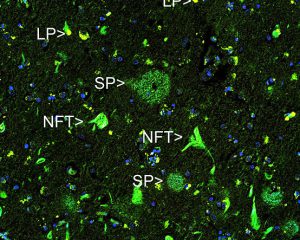Dr. Gordon Lithgow of the Buck Institute for Research on Aging, who spoke to us recently about the Caenorhabditis Intervention Testing Program, talks ...

Dr. Gordon Lithgow on conflicting results in longevity studies, the origins of the CITP, and more (part I)
Dr. Gordon Lithgow got in on the ground floor of aging research in the lab that discovered the first anti-aging mutation, age-1, and has spent the 25 ...

Rapamycin: An impressive geroprotector with a few potential flaws
If any drug has performed consistently and unequivocally well in anti-aging trials, it’s rapamycin. Dr. Matt Kaeberlein’s Dog Aging Project is among t...

When copy-paste attacks: A possible answer to the mystery of Alzheimer’s disease
The first thing you’ll notice if you look at existing treatments for Alzheimer’s disease is that they don’t work. The second thing you’ll notice is th...

Do aging circadian clocks have tricks up their sleeves?
Most lifeforms wrap their lives around a 24 hour wheel that dictates when to rise, when to eat, when to grow, and when to sleep. From its seat in a pa...

Intriguing results for Thioflavin T, but reproducibility is the real winner in CITP
Bolstering results from a 2011 study, a team led by Buck Institute researcher Gordon Lithgow found the compound Thioflavin T to increase the lifespan ...

Live slow, die old: Mounting evidence for caloric restriction in humans
Let’s say you wanted to hear a first-hand story of ordinary life 100 years ago. Where might you go to find a storyteller? Maybe you want to hear as ma...

Flip this epigenome: Making old mice good as new
Scientists at the Salk Institute for Biological Studies knew it could be done in principle–all you had to do to erase the telltale signs of agin...

